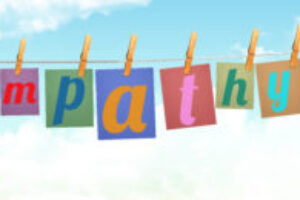A friend of mine was frustrated with the school system, her son’s teacher, her son, and herself. Diagnosed with ADHD early on, nothing my friend did, the teachers did, the school did seemed to help her son. Labeled as a behavior problem, her son struggled. Nothing was working and, year after year, he fell further and further behind. It was getting to the point where he was spending more time outside of school (because of phone calls to pick him up) then inside of school. After one particularly frustrating day, I told my friend that I believed her son to be autistic, or at least fell on the autism spectrum, not ADHD. I encouraged her to make an appointment with her son’s pediatrician and explain everything that has been going on, what was working and what wasn’t working. What has been tried and what hasn’t been tried. I encouraged her to ask the pediatrician to have her son tested. Not specifically for autism, but for something that would explain her son. After further testing, it was indeed determined that her son was autistic.
For those of you who don’t know, autism, or autism spectrum disorder (ASD), refers to a range of conditions characterized by challenges with social skills, repetitive behaviors, speech and nonverbal communication, as well as by unique strengths and differences. We now know that there is not one autism, but many types, caused by different combinations of genetic and environmental influences. Some children and adults with ASD are fully able to perform all activities of daily living while others require substantial support to perform basic activities. Adults with autism can hold down jobs, get married, and lead very productive lives. Obvious signs of autism generally appear between 2 to 3 years of age, and sometimes as early as 18 months. Some developmental delays associated with autism can be identified and addressed even earlier. Certain medical and mental health issues frequently accompany autism, which include attention deficit and hyperactivity disorder (ADHD). Here in lies the problem.
Children with autism look like your average student, athlete, artist, tech geek, music genius, dancer, writer, actor, or adult. Whether in the classroom, on the football field, in art class, during music lessons, or dance practice, everything seems normal. Until… the teacher, coach, parent, caregiver, relative, lay-person, etc. delves a little deeper. They notice something, something that doesn’t seem right, feels off, looks different, yet, still normal! Something that typical discipline measures don’t touch, behavior plans don’t change, basic instruction/teaching appears to go unnoticed, and labels such as ADHD should fit, but does not quite fit. Welcome to the world of ASD!
For parents, like my friend, it is one thing to deal with teachers, who, for the most part, have gained a basic understanding of autism and are trying to figure things out. But, what about the teacher who doesn’t have a clue, or the teacher/psychologist/etc. who thinks they know what autism is but truly don’t, or the football coach, the music teacher, or the dance instructor who has no idea how to deal with a child with autism! One demand too many, one break in routine, one wrong word/sentence spoken, one broken promise, one missed opportunity, can be the difference between a successful outcome and a very disastrous meltdown, or something in between!
The problem is a lot of people who deal with children, like teachers, psychologists, therapists, etc., have not caught up with current trends in autism, still expressing some beliefs consistent with outdated autism research. Students with ASD don’t look like they used to. That is why so many children with milder forms of autism go undiagnosed or misdiagnosed until adulthood. In either case, these children struggle in school, in life.
So, for this blog, I have a twofold challenge!
For teachers, psychologists, therapists, etc., who deal with students, learn, update, and find out more about ASD and current research and trends in the field of ASD.
For everybody else who coach, tutor, and/or provides lessons to children, learn about ASD. That one student, athlete, dancer, writer, painter, tech wizard that drives you crazy just may be that kid that falls on the autism spectrum.
I have created a list that you can print up and provide to any person who is dealing with a child with autism to help them better understand this very special and very unique individual.
Understanding Children with ASD
Social Skills
- Lack of or total avoidance of eye contact does not mean disrespect. It does not mean they are not listening to you. It does mean that the autism makes it very difficult for them to make eye contact, and demanding it can lead to behaviors.
- Struggles with understanding and is often unaware of other people’s feelings. May laugh at inappropriate times, say the wrong thing, or show lack of sympathy/empathy/compassion. They are not intentionally being insensitive. Understanding people’s feelings must be taught, not expected.
- Does not understand how to play or engage with other children.
- Prefers to be alone. Can be seen as anti-social by others.
Speech and Non-Verbal Communication
- May be non-verbal or has delayed language development. Will only interact to achieve a specific goal.
- The mutual give-and-take of typical communication and interaction is often particularly challenging, awkward, and inappropriate. Will favor a narrow range of favorite topics, with little regard for the interests of the person to whom they are speaking.
- Don’t be surprised if they don’t respond to their own name when called.
- May give unrelated answers to questions.
- Can have a hard time using and understanding non-verbal cues such as gestures, body language, or tone of voice.
Repetitive Behaviors
- Repeats words or phrases over and over and over.
- Performs repetitive behaviors such as flapping, rocking, spinning, or twirling.
Other Characteristic Behaviors
- Gets upset by minor changes in routine or surroundings. A simple unexpected stop on the way home from school can lead to behaviors.
- Has highly restricted interests.
- Have unusual and often intense reactions to sounds, smells, tastes, textures, lights and/or colors.
- Can be impulsive.
- May become preoccupied with parts of objects like the wheels on a toy truck.
- May become obsessively interested in a particular topic such as airplanes or origami, like my friends son.
- May begin to engage in self-abusive behaviors like head banging.
What Autism Is Not
- Contrary to popular belief, children with ASD are not without feelings and emotions. Some children and adults with ASD do express affection, smile and laugh, and show a variety of other emotions, but in varying degrees.
- Although children with ASD are often described as being “aloof’ or “self-absorbed,” many of them would like to have friends. However, the very nature of their disability makes it difficult for them to establish or maintain the basic peer relationships that ultimately develop into friendships.
- Autism is not the result of poor parenting, lack of attention, or not enough love.
- Children with autism are not just unruly or spoiled kids with a behavior problem.
- The vast majority of persons with autism are not just savants, like the character portrayed by Dustin Hoffman in the movie Rain Man.
The demands of living, working, teaching, and interacting with a person with ASD are great. ASD is not an easy lifelong journey!!! Families frequently experience high levels of stress. Parents have to deal with behaviors and pursue treatments all the while planning for their child’s future. Although the rise of parent organizations and the destigmatization of childhood ASD have affected how ASD is viewed, parents continue to feel social stigma in situations where their child’s autistic behavior is perceived negatively. What is needed is greater public understanding and respectful discussions about autism and the persons who live with it each and every day of their lives.
Helpful Links



